Learn How to Read & Spell Using Phonics
Over the last 100 years, governments of major English-speaking countries such as UK, USA, Australia and Canada have followed a number of fashions in the teaching of basic reading skills – from very simple Phonics, to the Whole-Word or Look-Say Method, then the Whole Language Method, and finally in the last ten years or so, the Synthetic Phonics Method.
All these approaches require the reading student to learn completely different thinking strategies for the reading of individual words: Phonics focuses on decoding letters to work out the sounds they represent, the Look-Say Method focuses on memory of the whole word as a picture, and the Whole Language Method encourages prediction from context as well as memory of whole words when taught without Phonics.
The Research Backs Phonics for Basic Reading and Spelling Skills
A lot of research has been done to test these methods over the last 10-20 years. It has become clear that Phonics instruction provides superior result in teaching word attack skills to either the Whole-Word Method or the very different Whole Language Method. Specifically, research shows the superior approach is Synthetic Phonics where the reader is trained to break words into groups in his/her mind and to decode each group of letters (grapheme) into the sound that it represents (phoneme). With appropriate practice the reader’s mind is trained to do this automatically and at high speed. This leave’s the reader’s conscious mind free to focus on comprehension.
For example, using the Synthetic Phonics Method students would be taught to work out the sounds in the word ‘third’ by breaking it up into three groups of letters:
- The group of letters ‘th’ which has the /th/ sound as in ‘three’.
- The group of letters ‘ir’ which has the /er/ sound as in ‘germ’ and ‘girl’.
- The letter ‘d’ which has the /d/ sound as in ‘dog’.
The UK Government Criteria for High-Quality Phonics Programs
In 2011, the UK government set down standards that High-Quality Phonics Programs should meet. The High Performance Learning Phonics Program has met these criteria for more than 35 years. It is important to note from the start that our Phonics Program is integrated with specific teaching of Learning Skills (such as auditory and visual short term memory, physical/mental coordination skills, etc.) as well as the specific teaching of sophisticated comprehension skills from the outset. The much neglected area of learning how to read in syllables is also given extensive coverage in our program.
Brief description of the High Performance Learning Phonics Program:
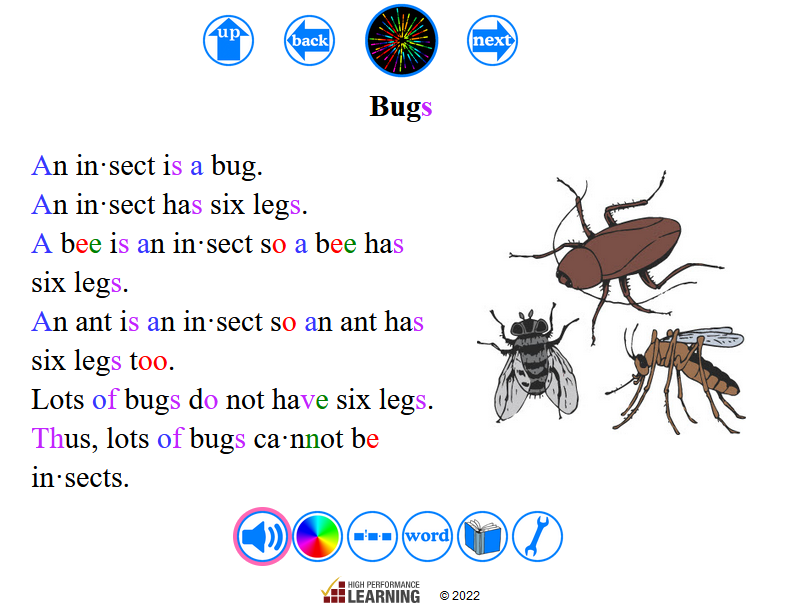
This is an image of the story “Bugs” from Unit 1: Book 6. Our Program provides a step-by-step program arranged sequentially into eight stages, starting with learning the codes for short vowel and consonant sounds, followed by common irregular words (sight words), the long vowel sounds, other vowel sounds, reading syllables, advanced syllable rules, irregular letters, and regular and irregular silent letters. We integrate the Phonics skills with training in other skills such as learning how to learn, physical and eye coordination, stress management, handwriting, mind set, comprehension, etymology, and so on.
Resources in our Program include: various cards sets to learn the coding rules and spelling rules of English; a number of board games used to practise the coding and other rules of English; carefully graded readers for each stage; access to the multi-media version of the Program on a dedicated web site – sample our interactive multimedia materials by clicking here; numerous information sheets containing the coding rules and statistics on their frequency; numerous written exercises to parallel the reading stages.
We provide weekly individual and family tuition live, anywhere in the world, directly over the internet in our online classrooms. We encourage parents to do the program with their children so they can dramatically improve their own reading skills at the same time as helping their child become one fo the best readers in his/her class. A program of activities is set to be done between lessons.
How the High Performance Learning Phonics Program presents high quality systematic, synthetic phonic work as the prime approach to decoding:
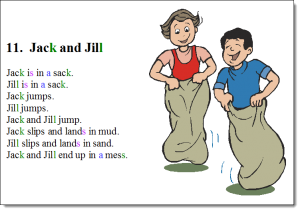
“Jack and Jill” is a story from Unit 1: Book 2. Click on the picture to experience using BetterThanaBook Multi-Media Font. Our Program highlights the phonic code of English by colour-coding all the phonic rules in all our materials. This highlights the code from day one and helps the learner distinguish the different sounds that one letter, or one group of letters can have. For example, a black ‘a’ = /a/ as in ‘ant’; a red ‘a’ = /a/ as in ‘ape’, a brown ‘a’ = /ar/ as in ‘father’, a green ‘a’ is silent as in ‘soap’, and so on.A unique feature of our Program is that we integrate the teaching of syllables with phonics. Putting the correct sounds into a syllable is a very important skill which makes the reading of long words much easier.
How the High Performance Learning Phonics Program enables children to start learning phonic knowledge and skills using a systematic, synthetic programme by the age of five, with the expectation that they will be fluent readers having secured word recognition skills by the end of key stage one (the end of Year 2):
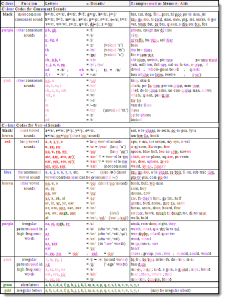
The Colour-codes used in the High Performance Learning Phonics Program. The Colour-codes used in the High Performance Learning Phonics Program[/caption]Our Program is designed to be done by people of any age so remedial readers get as much benefit as children in Years 1 and 2. This is made possible by the colour-coding system for the phonic rules. Your children catch on very quickly to the fact that many letters can have more than one sound – they see this by the various colours they can have. For example, a black ‘s’ has a /s/ sound as in ‘snake’ ; and a purple ‘s’ has a /z/ sound as in ‘bees’.
Our program, from the very start, has a big emphasis on teaching the vocabulary required for learning to read English. The children learn the meaning of words such as: letter, name, sound, vowel, consonant, syllable, before, after, often, usually, and so on.
How the High Performance Learning Phonics Program has been designed for the teaching of discrete, daily sessions progressing from simple to more complex phonic knowledge and skills and covering the major grapheme/phoneme correspondences by:A clear curriculum sets out daily activities appropriate to each stage of our Program. Progress occurs ONLY when skills being practised are mastered. This ensures the child is never overwhelmed by having to learn too many new skills at once.

Sounds of the letter-group ‘oo’. Our Program is research based, so we don’t only teach the major grapheme/phoneme correspondences, we teach them all! We have done extensive research on the grapheme/phoneme correspondences in English, their frequency in the dictionary, and their frequency in normal text. Students learn to use the statistics we have generated to develop efficient strategies for finding the correct pronunciation of a grapheme in a particular word. For example, the grapheme ‘oo’ has three possible sounds in English: /oo/ as in ‘book’, /OO/ as in ‘spoon’, and very occasionally /u/ as in ‘blood’, so when trying to decode an unknown word, our students are taught to try the /u/ sound last.
How the High Performance Learning Phonics Program enables children’s progress to be assessed:Our Program has clearly defined criteria for assessing each individual skill and we do not allow a student to progress to the next stage without mastering the previous stage.
Furthermore, our Program has revision and re-testing of all knowledge right through to the end of the program and beyond – after the program is finished we provide materials and games to reinforce the knowledge in an enjoyable way.
How the High Performance Learning Phonics Program uses a multi-sensory approach so that children learn variously from simultaneous visual, auditory and kinaesthetic activities which are designed to secure essential phonic knowledge and skills: Our Program integrates all three modalities, visual, auditory and kinaesthetic by means of colour-coding letters, visual memory aids for each phonic rule, statistical information on each phonic rule, handwriting and letter formation skills, sounds available on demand using computer software – sample our interactive multimedia materials by clicking here, and so on.
- How the High Performance Learning Phonics Program demonstrates that phonemes should be blended, in order, from left to right, ‘all through the word’ for reading by:In the very early stages of our Program children are taught about order by giving them practice working out how to read nonsense words containing only two sounds. Once they can do this they then work on words with three sounds.
Our Program has a big focus in the early stages on development of visual and auditory short-term memory skills, one of the most important being understanding how to use order in the short-term memory.
How the High Performance Learning Phonics Program demonstrates how words can be segmented into their constituent phonemes for spelling and that this is the reverse of blending phonemes to read words by:
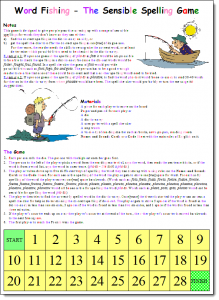
Word Fishing – The Sensible Spelling Game is a game from the Basic Reading and Phonic Program Right through our Program, once a reading skill or rule is learnt, we teach students how to reverse the process for spelling. We also have games to teach the reverse of blending phonemes, as we do for all other key skills needed to learn Phonics.
Furthermore, we use statistical analysis of the English Language to provide our students with clear strategies to try when spelling particular sounds (phonemes). For example, there are three graphemes used to spell the /f/ sound in English: the letter ‘f’ as in ‘fish, the letters ‘ph’ as in ‘phone’, and occasionally the letters ‘gh’ as in ‘cough’, so we would teach students to try them in that order until they get the spelling correct. We teach spelling strategies for all the 44 sounds in English.
How the High Performance Learning Phonics Program ensures that children apply phonic knowledge and skills as their first approach to reading and spelling even if a word is not completely phonically regular:
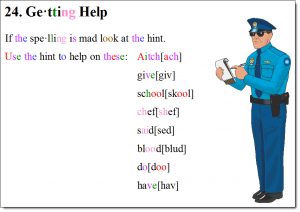
Help with reading irregular letters in words is provided in brackets. Our Program is very carefully graded so that words that contain irregularities are taught before they are presented. We also provide a phonically regular alternative until the word is mastered. We also colour-code irregular letters so that the student is aware that the letter is irregular. For example, ironically the ‘e’ in English is irregular so the ‘E’ is colour-coded gold to signify that it is irregular, and the word would be re-spelt so the sound of the ‘E’ is clear: English[Inglish].
How the High Performance Learning Phonics Program ensures that children are taught high frequency words that do not conform completely to grapheme/phoneme correspondence rules:Our second Unit of work is devoted to high frequency words that do not conform completely to grapheme/phoneme correspondence rules. Any high frequency words not dealt with in that Unit are covered in other units as appropriate. We use colour-coding to make it clear to the student which sound these irregular letters have in each word.

Sounds of the letter ‘f’ Furthermore, we provide the student with detailed statistics on the frequency of all grapheme/phoneme combinations, both in the dictionary, and in normal text. For example, the letter ‘f’ represents the /f/ sound as in ‘fish’ 90% of the time in the dictionary but only 65% of the time in normal text; the letter ‘f’ represents the /v/ sound as in ‘of’ <1% of the time in the dictionary but 30% of the time in normal text (due to the high frequency word ‘of’[ov]); and the letter ‘f’ is silent like the second ‘f’ in ‘off’ about 10% of the time in the dictionary but only 5% of the time in normal text.
How the High Performance Learning Phonics Program provides fidelity to the teaching framework for the duration of the programme, to ensure that these irregular words are fully learnt:Both the reading and spelling of ALL irregular words is taught throughout our Program, not just the common irregular words. Students are taught the concept of irregularity at the start of our Program, as soon as they understand the concept of a ‘rule’. A number of games in our Program reinforce the concepts of regular and irregular letters in words.
To assist the student to learn the irregular words we give detailed instruction on etymology of words because many irregular words are irregular because they are following rules from other languages. For example, the ‘ph’ is used to spell the ‘f’ sound in ‘phone’ because the word ‘phone’ is based on the Ancient Greek word for sound. In the word ‘was’, the ‘a’ is used to spell the /o/ sound because the word ‘was’ comes from Old English or Old High German.
How the High Performance Learning Phonics Program ensures that, as pupils move through the early stages of acquiring phonics, they are invited to practise by reading texts which are entirely decodable for them, so that they experience success and learn to rely on phonemic strategies: We provide very carefully graded reading material so students NEVER have to read a word that contains rules they have not learned yet because we always provide a phonetic spelling. For example, until the rule that an ‘o’ can be pronounced ‘OO’ as in ‘do’ has been taught, the word would be presented thus: do[doo].
Furthermore, when our materials are being read on a computer, the student can click on any letter to hear its sound. This feature, and our colour-coding system dramatically reduces the stress on learning to read. Sample our interactive multimedia materials.
The Best Time to Teach Your Child How to Become a Good Reader is NOW
Contact us now on 0419 806 706 so we can explain how we can help your child become one of the best readers in the class.
